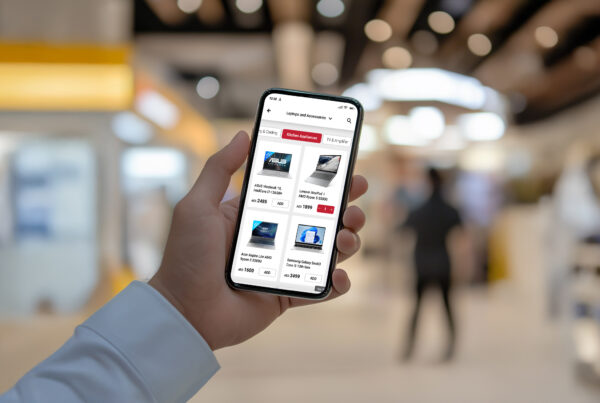In an age where instant gratification reigns supreme, businesses face an ever-increasing pressure to meet customer expectations for fast, reliable deliveries. Yet, for many companies, delivery management remains a perplexing challenge that can lead to significant operational costs and customer dissatisfaction. Inefficiencies in delivery not only erode profit margins but also risk damaging brand reputation in a competitive landscape. Understanding the true costs of ineffective delivery management—and more importantly, how to address them—is essential for businesses aiming to thrive in this demanding environment.
According to a study by McKinsey & Company, logistics costs can account for up to 10% of a company’s revenue, underscoring the critical need for efficient delivery management (McKinsey – The Impact of Logistics). Moreover, a report from Statista reveals that 25% of customers will abandon their carts if delivery options are unsatisfactory (Statista – E-commerce Delivery Statistics).
Understanding the Costs
Ineffective delivery management can manifest in various ways, including delayed shipments, increased operational costs, and unsatisfied customers. These challenges create a ripple effect that affects not only the supply chain but also customer loyalty and brand reputation.
Delays in delivery can stem from various factors, including unforeseen circumstances, poor planning, or a lack of resources. When a business fails to deliver on time, it not only incurs additional costs—such as expedited shipping fees or penalties—but also risks frustrating customers who expect prompt service.
Identifying Pain Points
To effectively address the costs associated with ineffective delivery management, businesses need to identify common pain points, including:
- Inefficient Routing:
- Poor route planning can lead to longer delivery times and increased fuel costs. With the rising cost of fuel and environmental concerns, inefficient routing is not just an operational issue; it’s a financial one. By investing in route optimization software, businesses can minimize travel time and fuel consumption, leading to significant savings.
- Furthermore, using advanced algorithms can help identify the best routes based on real-time traffic data, weather conditions, and delivery schedules. This not only speeds up the delivery process but also enhances overall efficiency.
- Lack of Visibility:
- Without real-time tracking, businesses may struggle to manage customer expectations effectively. In an era where customers demand transparency, a lack of visibility can lead to dissatisfaction. Customers want to know where their packages are at any given moment.
- Implementing a robust tracking system that offers real-time updates can bridge this gap. This allows businesses to provide accurate delivery timelines, reducing the number of inquiries and enhancing customer trust. Additionally, visibility can help businesses proactively manage potential delays, allowing for timely communication with customers.
- Inadequate Communication:
- Failing to communicate delivery updates can result in customer frustration and loss of trust. Effective communication is vital for maintaining a positive customer relationship. When customers are left in the dark regarding their delivery status, it can lead to anxiety and dissatisfaction.
- Establishing clear communication channels—such as SMS alerts or mobile app notifications—can keep customers informed at every stage of the delivery process. This proactive approach not only enhances the customer experience but also minimizes the number of service calls regarding delivery status.
Implementing Effective Solutions
To combat these pain points, consider the following solutions:
- Optimised Route Planning:
- Leverage technology to plan the most efficient routes, reducing delivery times and costs. By utilizing routing software, businesses can analyze multiple factors that affect delivery routes, such as traffic patterns, delivery time windows, and even vehicle capacities.
- Additionally, integrating GPS technology can further enhance route planning, allowing for real-time adjustments based on unexpected obstacles. This not only improves efficiency but also enhances driver safety.
- Enhanced Tracking Systems:
- Implement tracking systems that provide real-time updates to customers, improving transparency and trust. Advanced tracking systems not only show the current location of a package but also provide estimated delivery times and alert customers to any changes.
- Utilizing a customer portal where clients can track their orders enhances engagement and satisfaction. Moreover, offering a self-service option reduces the burden on customer service teams, allowing them to focus on more complex inquiries.
- Proactive Communication:
- Establish clear communication channels to keep customers informed about their deliveries. This can greatly enhance the customer experience. Creating automated messaging systems that send notifications at key points—such as when the order is confirmed, dispatched, and out for delivery—can significantly improve communication.
- Additionally, fostering two-way communication where customers can easily reach out for updates or concerns enhances the overall experience and strengthens the relationship between the business and its customers.
The Impact of Ineffective Delivery Management
The consequences of not addressing delivery management issues can be severe. A report by Forrester Research states that companies that prioritize customer experience can achieve revenue growth of up to 5.1 times faster than their competitors (Forrester – Supply Chain Research). This statistic illustrates how critical effective delivery management is for maintaining a competitive edge.
Businesses must recognize that effective delivery management directly correlates with customer loyalty. When customers experience consistent, reliable service, they are more likely to return and recommend the business to others. Conversely, repeated delivery issues can lead to negative reviews and diminished customer trust.
Measuring Improvement
To ensure that your delivery management strategies are effective, it’s essential to establish key performance indicators (KPIs). Consider tracking:
- On-time Delivery Rate:
- Measure the percentage of deliveries made on time to identify trends and areas for improvement. This metric is crucial for understanding the effectiveness of your delivery processes and can highlight seasonal trends or recurring issues.
- Regularly reviewing this data can help identify patterns that may require strategic adjustments, such as hiring additional drivers during peak seasons or enhancing training programs for staff.
- Customer Satisfaction Scores:
- Regularly survey customers to gauge their satisfaction with the delivery process. Gathering feedback through post-delivery surveys or follow-up emails can provide valuable insights into customer perceptions and areas needing improvement.
- Analyzing this feedback can guide adjustments to service offerings and highlight specific pain points that may not have been previously recognized.
- Cost per Delivery:
- Monitor the costs associated with each delivery to identify potential savings. This includes assessing fuel costs, labor expenses, and packaging materials. By analyzing these costs, businesses can identify inefficiencies and implement cost-saving measures.
- Regularly benchmarking delivery costs against industry standards can also help identify areas for improvement and ensure competitive pricing.
Conclusion
In conclusion, addressing the true cost of ineffective delivery management is a crucial step for businesses aiming to achieve long-term success. The logistics landscape is evolving, and customers are increasingly discerning, placing a premium on reliability and transparency. By proactively identifying and resolving delivery inefficiencies, companies can not only reduce operational costs but also enhance customer satisfaction and loyalty.
Investing in optimized routing, advanced tracking systems, and effective communication channels will yield significant returns in the form of improved delivery performance and heightened customer trust. Businesses that prioritize these strategies can expect to see a positive impact on their bottom line, driving revenue growth and creating a competitive advantage in the marketplace.
Ultimately, effective delivery management is not merely a logistical concern; it is a fundamental component of customer experience and brand reputation. Companies that commit to refining their delivery processes will foster lasting relationships with their customers, ensuring they remain the preferred choice in an increasingly competitive environment. By recognizing the true costs of ineffective delivery management and taking decisive action, businesses can pave the way for sustained growth and success.



